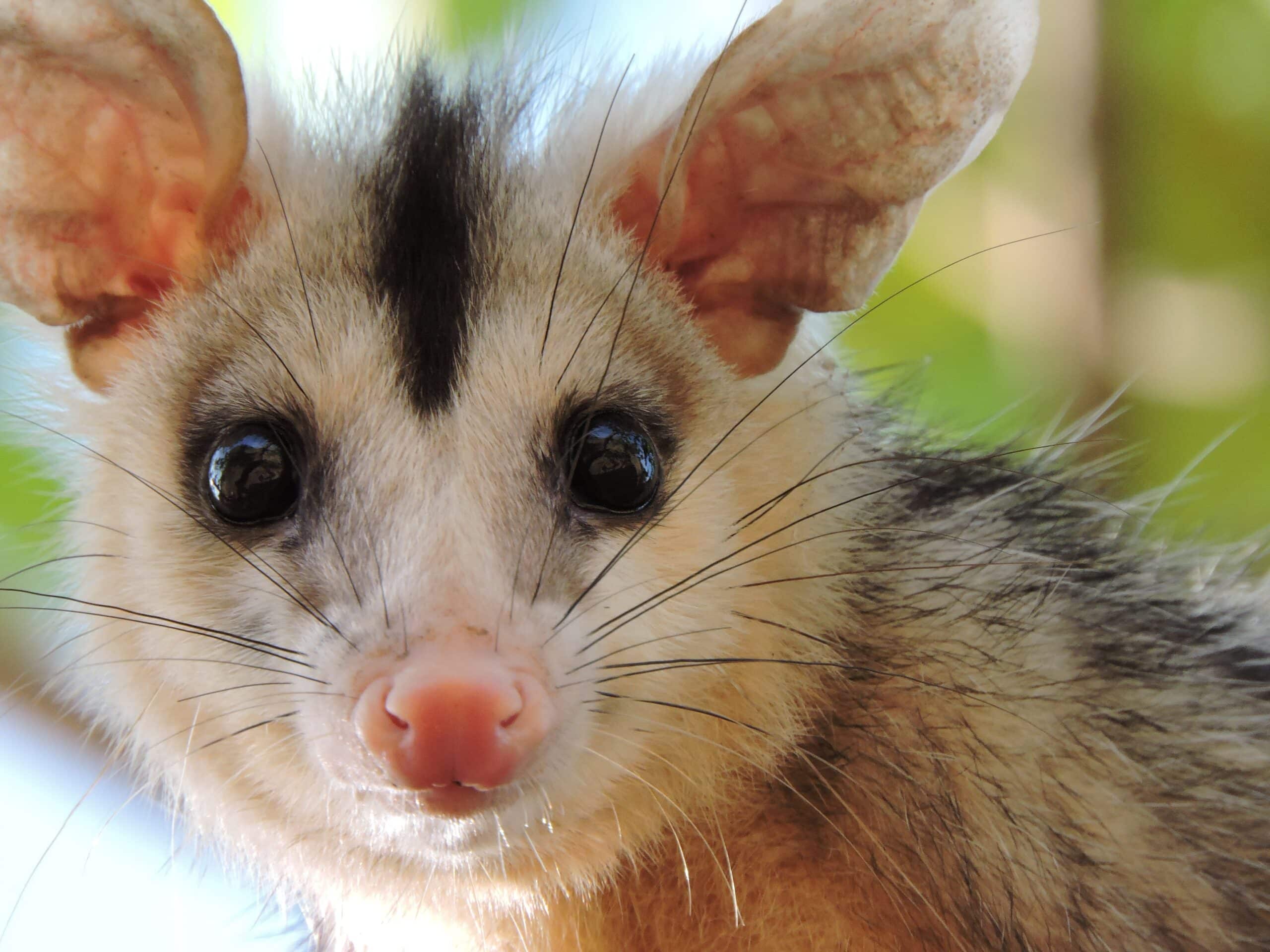
Are you curious to learn more about skunks and the fascinating world they inhabit? Discover key facts about this species and their surprising behavior in the wild. From their seasonal habits to methods of self-defense, uncover the remarkable story of skunks.
Introduction to Skunks
Skunks are medium-sized, omnivorous mammals in the Mephitidae family. They possess a unique odor-producing gland that they use as a defensive weapon that can effectively ward off predators and threats. Their striking black-and-white patterns make them one of the most easily identified mammals in the wild.
Skunks inhabit open areas such as meadows, grasslands, and forests; however, they are prone to taking over abandoned burrows made by other animals. In addition to using these burrows for escape or cover, skunks sometimes opt to build denning areas for breeding periods. Common denning sites include hollow logs and often porches or decks covered by shrubbery or woodpiles; these areas serve as ideal protection from temperatures during mating season. Moreover, these noted mammals construct latrines near their den sites containing their feces, which may mark the area’s territory.
These omnivorous creatures vary significantly in appearance depending on the species. Generally, they have long bodies with a prominent bushy tail and two conspicuous stripes running down their backs that may be white or yellow, depending on the region. They measure between 18 inches (45 centimeters) for smaller species, such as hog-nosed skunks, up to 37 inches (94 centimeters). Their diets also vary based on habitat but commonly consist of the following:
- Insects like beetles and caterpillars;
- Small frogs, snakes, and lizards;
- Nuts and grains;
- Fruits like tomatoes;
- Birds’ eggs.
Skunk Habitat
Skunks are found in many environments throughout the United States, including scrub, meadows, wooded shrub habitats, and pine/oak forests. They also inhabit areas near developed areas such as cities, towns, and agricultural farms.
The type of habitat a skunk prefers varies depending on their preferences; some species favor more natural settings, while others prefer suburban or even urban areas. Skunks dig burrows to shelter themselves near rock piles or debris; they may also den in stumps, hollow logs, or abandoned holes made by other animals. Their home ranges can vary significantly in size – from just a few acres to up to ten miles – depending on food availability and the type of habitat in which they live.
In some areas, skunks are more common during summer when food abundance is high, and they can find plenty of insects and rodents to eat; they typically become less active during winter when food is scarce. Skunks hibernate in winter dens dug up alongside tree roots or below stones where temperatures remain relatively constant for extended periods beneath the snow cover.
Skunk Anatomy
Skunks are omnivorous mammals, mostly found across North and South America. Although they have a reputation for smelling bad, these animals also have a range of fascinating features which give them advantages on the modern-day savannah.
The skunk’s body is divided into three main sections – the head, center, and back. Small ears characterize the head, almost hidden by the long fur that tops their heads. The eyes are beady and intense, with vision considered good during low-light conditions. The mouth has four canine teeth and a set of molars used for chewing – they use meat and vegetation to sustain themselves in the wild.
The body’s center consists mainly of four legs which end in paws with claws that can retract when unnecessary. This mobility has benefitted skunks over time and helps them climb trees as well as dig up roots for food sources down below. Their fur is coated in a black/white color, typically in stripes or letterbox format. It acts excellent camouflage at night and during periods of low-light conditions, making them even harder to detect than cats or dogs, thanks to their primal skills!
Finally, there is an anal scent gland at the back that can identify potential predators that may attack from afar during nighttime movement periods in the wilds of America – this has been key for survival ever since this species was first established millennia ago!
Skunk Behavior
Skunks are typically solitary and territorial animals. However, they form social groups when there is access to abundant food and resources. When living in groups, they prefer to create pairs of one male and one female skunk, who will pair off for up to three breeding seasons.
In addition to being territorial, these mammals have a unique defense mechanism in the form of a foul-smelling fluid secreted from scent glands on their anal area. This secretion can be aimed accurately towards potential predators and deterrents by their ankles and tail. For this reason, potential predators, such as coyotes or dogs, typically give skunks a wide berth!
Skunks are primarily nocturnal animals that feed on insects, worms, small mammals, birds’ eggs, fruit, and vegetable material, making them omnivores. They generally remain active at night all year round throughout their range due to winter temperatures being moderate for extended periods. In areas with frigid winters, skunks may experience periods of dormancy or semi-hibernation known as torpor to conserve energy levels, which may drop because food availability decreases significantly.
Skunk Diet
The omnivorous skunk’s diet includes plant and animal matter found, foraged for, and hunted. Skunks primarily consume fruits, berries, nuts, roots, and other vegetation in suitable areas. Other than grasses, corn and turnips are the most commonly consumed vegetable.
Additionally, insects such as grasshoppers and beetles make up a significant portion of their diet.
The animal matter in their diet typically consists of small rodents such as mice and squirrels but may also include birds’ eggs or a variety of carrion. Skunks will also hunt live animals more significantly than themselves if an opportunity presents itself, with cats being mainly targeted by skunks in urban settings seeking accessible food sources.
Skunks have been identified as one of the primary carriers of rabies in North America due to the abundance of their primary food source; small rodents harboring this virus are a core part of the skunk’s dietary intake. As such, they play an important role in controlling rodent populations, which can lead to improved management strategies to prevent the further spreading of this viral disease among these animals and humans.
Skunk Predators
Skunks are usually considered solitary creatures, but they can be prey to several predators when out in the wild. The most common skunk predators include:
- Owls: Owls have excellent eyesight, so when they spot a skunk alone or in small groups, they swoop in for the kill. The size of the owl depends on the species, and some owls can have a wingspan over 5 feet wide!
- Raccoons: Raccoons are brilliant animals that sometimes target skunks if their usual food sources cannot be found. Raccoons may not always attack full-grown skunks; instead, they may try to see more significant numbers of juvenile ones.
- Coyotes: Coyotes are known for being cunning and persistent hunters who can easily overpower a single skunk. They often stake out an area where they see a lot of activity from these mammals and then wait for the perfect opportunity to strike.
- Foxes: Foxes have an excellent sense of smell and hearing, which helps them track down their prey. Skunks can also be occasional snacks for these agile carnivores that feed more on small rodents than bigger animals like deer.
- Domestic cats & dogs: While some pets do not seem to hunt actively for skunks, several cats & dogs have been known to occasionally encounter one in the wild—notably smaller breeds such as Terriers or Chihuahuas that are more likely to take on creatures more significant than themselves!
Skunk Conservation
Skunks are essential members of their habitats and have an important role in the ecosystem. Unfortunately, their increasing vulnerability has made effective conservation measures potentially necessary. While historic skunk conservation efforts have been hampered by a general lack of understanding about skunks, recent studies have given us a chance to build on our knowledge about these animals and craft conservation strategies that can help protect them moving forward.
With the right interventions, we can help save these fascinating creatures – they are essential predators in North American ecosystems. Skunks eat countless insects, small rodents, and grubs; they even consume poisonous mushrooms when food is scarce. In addition, skunks also act as vectors for food sources like nuts and seeds; they spread these potential resources around while doing their nightly scavenging.
Because skunks inhabit a more extensive range of terrains than other animals – including farmland and grasslands – the implications of their loss would be felt far beyond local ecologies. That’s why it’s so important that we take action now to protect them; informed conservation strategies can ensure that these unique mammals remain viable parts of the wild for years to come.
Conclusion
In conclusion, skunks have made a lasting impression in scientific and cultural terms. These typically solitary animals lead an exciting and varied lifestyle, relying on their distinctive stripes and remarkable sense of smell to survive in a wide range of habitats.
Despite their negative reputation as smelly pests, skunks can be incredibly beneficial to the environment, helping keep insect populations in check and serving as a food source for other wildlife.
With increasing development occurring around their natural habitats, we must take measures to ensure the safety of these animals. Conservation initiatives such as pushing for legal protections against trapping and poisoning are just some of the steps that can be taken toward preserving our wild skunk populations for years to come.
Frequently Asked Questions
Q: Where do skunks live?
A: Skunks are found throughout the Americas, from Canada to northern South America. In the United States, they are most commonly found in the Midwest and Southeast, though they can also be found in many other areas.
Q: What do skunks eat?
A: Skunks are omnivores, meaning they eat both plants and animals. They feed on various foods, including small rodents, insects, berries, fruits, and nuts.
Q: How do skunks defend themselves?
A: Skunks have a powerful defense mechanism, emitting a strong and unpleasant odor from glands near the tail’s base. This odor is powerful enough to deter potential predators, allowing the skunks to escape danger.





